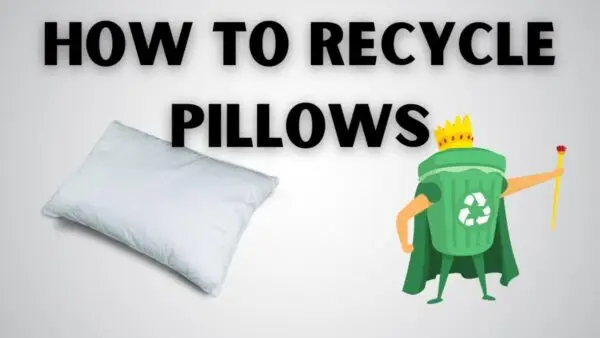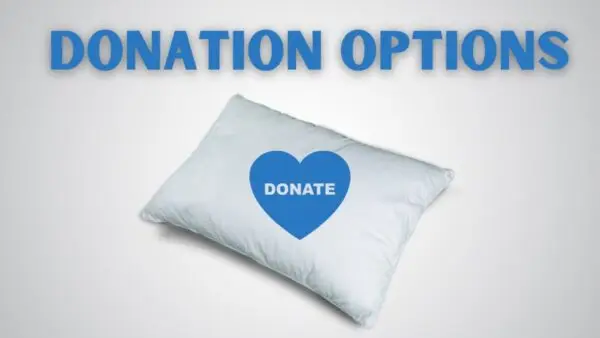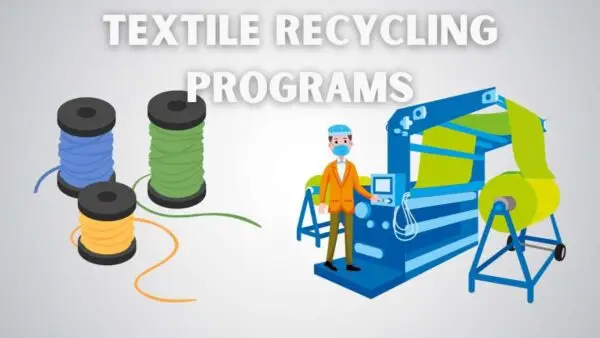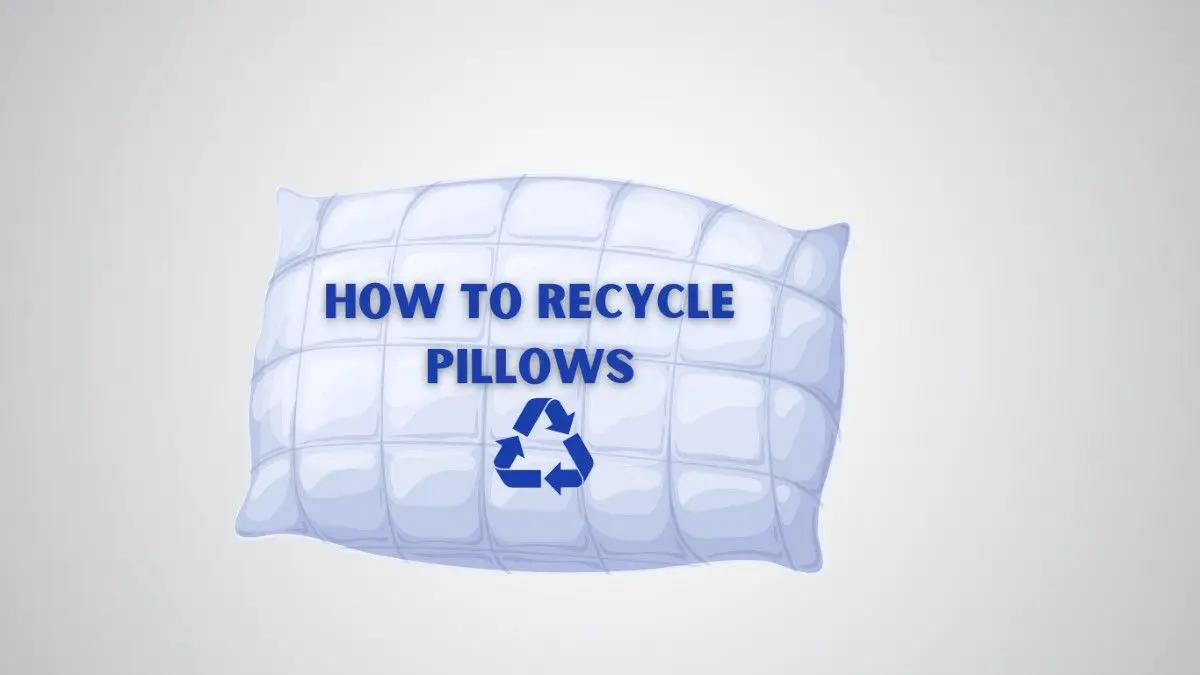Pillows are essential to getting a good night’s rest they provide convenience and comfort. However, as time passes they lose their shape, become stained, and can even be a source of allergens, making them less efficient or harmful. If a pillow is not being used anymore the question is how do you recycle them responsibly? Instead of throwing them in the garbage you can reuse or upcycle them to help the environment while conserving precious resources. This guide will provide clear, sustainable ways of recycling pillows and decreasing the amount of waste.
How to Recycle Pillows: Why It Matters

Every year millions of pillows get dumped and are thrown away in garbage bins, where products like memory foam or polyester last for a long time. Recyling pillows not only helps cut down on waste, but also recycles material into products. This is beneficial to the environment by conserving resources and decreasing the use of energy.
Key Benefits:
- Waste Reduction Recycling pillows keep bulky fabrics from accumulating in landfills.
- Resource Conservation The fibers from recycled materials can be made into insulation, cleaning rags or pillows.
- Energy savings: Recycling materials into products consumes less energy than manufacturing using raw materials.
- Circular Economy Recycling helps create a system in which materials are continually recycled, reducing the amount of waste.
- Economic Growth Recycling initiatives generate jobs and help local businesses.
Learning how to recycle pillows is an essential step towards creating an environmentally sustainable future.
How to Recycle Pillows: Understanding Pillow Materials
Before you decide on a disposal method it’s crucial to know the material your pillow is composed of. Certain materials need different recycling strategies. Here’s an overview of the most common pillows to help you decide the best way to recycle pillows:
Common Materials
- Memory Foam/ Polyurethane Foam
It is renowned for its contouring capabilities the non-biodegradable material is hard to recycle. - Polyester:
Often employed as a down alternative Polyester is recyclable, but might require special processing. - Down Feathers and Natural Fillings
These green materials can be reused or composted when separated from synthetic materials. - Natural fibers (Cotton Linen, Wool, Cotton):
Easy to compost or recycle especially if they are not treated with chemicals. - Synthetic Latex
It is durable and resilient, however the recycling problems similar to those faced by foam.
Knowing the composition of your pillow is essential for deciding on the most efficient recycling strategy.
How to Recycle Pillows: Assessing Recyclability
Some pillows are not able to be reused using traditional methods. To determine how to reuse pillows, take these steps:
- Review the Label
Examine labels on care products that include substances such as “polyester,” “memory foam,” “down,” or “organic cotton.” This information will guide you through the proper recycling procedure. - Assess the condition:
Clean and intact pillows are great for upcycling or donation when they are damaged or stained pillows can be reused. - Check Local Guidelines
A lot of curbside recycling programs don’t accept textiles. Make use of municipal sites or recycling tools to locate specific alternatives. - Research Specialized Programs
If options in your area aren’t readily available search for initiatives to recycle textiles or mail-in service providers that handle pillows.
These steps will help you pick the best method to reuse pillows based on the material and the condition.
How to Recycle Pillows: Sustainable Methods
After you’ve evaluated your pillow’s recycling capacity You can choose from a range of eco-friendly alternatives.
Donation Options

If your pillow remains in good condition after a thorough cleaning, you can donate it to prolong its life and benefit others. While some donation centers refuse used pillows due to hygiene concerns, you can consider these options:
- Animal shelters:
Clean softly used pillows can be great pet bedding. Always confirm guidelines before donating. - Homeless Shelters and Daycare Centres:
A few organizations will accept used pillows, provided they meet the standards of cleanliness. - Wildlife Rehabilitation Centers:
These facilities may use pillows for insulation or bedding for animals. - Local Non-profits:
Community centers and secondhand stores may accept donations when the pillow is in good condition.
Make sure to wash your pillow thoroughly prior to giving it away to eliminate any allergens or bacteria. This is a good method of recycling pillows through donation.
Textile Recycling Programs

If your pillows aren’t suitable to be reused or donated or recycling, textile recycling programs offer an environmentally responsible method of disposal. They dismantle pillows to extract valuable fibers and other materials.
- Local Drop-Off Centres
A lot of communities offer bins specifically designed for recycling textiles. Make sure to contact the local waste management company. - Mail-In Services:
Organisations like the American Textile Recycling Service (ATRS) or TerraCycle offer mail-in options. Use their tips for packing and sending your pillow. - Specialized Recycling Facilities
Certain facilities break up pillow components – fabric foam, filling, and the like–to reuse to create new products such as insulation or cleaning rags.
These programs help to conserve resources and show effective methods to recycle pillows in a sustainable manner.
Upcycling Ideas
Upcycling can transform your old pillow into something useful and new without destroying it completely. Check out these innovative ideas:
- Floor Cushions
Make a sleeve of pillows together to create a huge comfortable floor cushion for film nights or gatherings. - Pet Beds:
Convert an old pillow into a comfy pet bed by making an individual cover that is suited to the size of your pet. - Draft Stoppers:
Use pillow stuffing to make draft-stoppers for doors or windows. Fill a long sock or a fabric tube with the filling, then close it by sewing. - Craft projects:
Repurpose the filling to re-fill other cushions or make toys for animals that are stuffed. Covers made of fabric can be made into shopping bags that can be reused. - Garden Kneeling Pads:
Wrap an old pillow in a durable waterproof fabric to create the cushioned kneeling pad you need to use in gardening. - Packaging Material:
Use pillows to cushion your items and ensure the safety of fragile items during relocations.
These ideas illustrate how recycling pillows can also lead to innovative practical solutions to your home design.
How to Recycle Pillows: DIY Projects
For those who are hands-on DIY upcycling is a great method to recycle older pillows into fresh products. Here are a few detailed projects that show how to recycle pillows in a practical way.
DIY Pet Bed
Materials Needed:
- Old pillow
- Fabric that is durable and washable to make an entirely new cover
- Sewing machine or needle, and thread
- Scissors
Instructions:
- Clean your Pillow Clean your pillow well and allow it to dry completely.
- Take off the Cover: Cut the seam or unzip it carefully to release the filling.
- Measure and Cut Fabric Take measurements of the pillows’ dimensions, then cut the new fabric in line with the measurements. Join the two pieces leaving a gap.
- Refill and seal: Insert the original filling and stitch the opening shut. You can also decorate the patches.
DIY Floor Cushion Cluster
Materials Needed:
- A few old pillows
- Optional Fabric to create an uniform cover
- Sewing machine (if making new covers)
Instructions:
- Choose Pillows: Choose pillows that are similar in size or that can be arranged in a harmonious manner.
- Sew together: Arrange the pillows side-by-side and stitch the edges to create a large cushion. You can also make an easily removable cover to protect the whole cluster.
- Decorate: Add extra pillows or throw blankets to create a comfortable seating area.
DIY Draft Stopper
Materials Needed:
- Pillow stuffing, or filling
- A long tube of fabric or a pair of socks with a long length
- Thread and needle
Instructions:
- Make Fabric: Select a fabric tube or long socks that are long enough to fill the gap between your door and.
- Fill: Stuff the fabric until it is firm but flexible.
- Seal: Sew the open end of the seal securely closed. You can also decorate it with ribbon.
- Deployment: Place the draft stopper on the top of your door to effectively block cold drafts.
DIY Garden Kneeling Pad
Materials Needed:
- Old pillow
- Fabrics that are waterproof or outdoor-safe
- Sewing machine, needle, and thread
- Scissors
Instructions:
- Preparing the Pillow: Clean the pillow, and then remove the filling, If needed.
- Sew a Cover: Create a cover with a durable, outdoor-safe material. Make sure that it is open with an opening for a zipper or Velcro closure.
- Use outdoors: Use the finished pad in your garden to help cushion your knees when gardening or weeding.
How to Recycle Pillows: Common Pitfalls and How to Avoid Them
While recycling pillows can be rewarding, some common mistakes can impede your efforts. Here are some pitfalls to avoid:
Not Cleaning Thoroughly
- Problem: Failing to wash your pillow prior to donation or repurposing can spread allergens and germs.
- TIP: Always wash your pillow with mild detergent and adhere to the instructions.
Ignoring Material Labels
- Problem: Not checking the care label could result in recycling in a way that is not appropriate.
- Tips: Always review the label to know the pillow’s composition and select the most suitable method.
Overcomplicating DIY Projects
- Problem: Complex projects can be overwhelming and can lead to incomplete products.
- TIP: Start with simple projects such as draft stoppers or a pet bed, and then proceed to more sophisticated ideas.
Not Researching Local Options
- Issue: Recycling and donation centers differ according to region, which limits your options.
- Tips: Use local recycling locator tools or go to your municipal website to discover the most efficient recycling options.
Mixing Incompatible Materials
- Problem: Combining natural and synthetic fibers can make recycling more difficult.
- Tips: Separate non-textile components such as zippers or tags prior to recycling.
Avoiding these traps will ensure that your method of learning to reuse pillows is efficient and sustainable.
How to Recycle Pillows: FAQs
Can I recycle pillows within my Curbside Recycling Bin?
The majority of curbside programs don’t take pillows because they are considered to be textiles. Instead, search for specialized recycling programs for textiles, or drop-off facilities that accept pillows.
What should I do with pillows that are beyond Repair?
If your pillow is stained damaged, flattened or damaged recycling it through textile programs is typically the most efficient alternative. Mail-in services such as the American Textile Recycling Service (ATRS) or local facilities are able to sort out these items by separating the elements.
Are all pillows recyclable?
Not all pillows are recyclable. Pillows made from natural fibers, such as cotton wool, down, or are more recycleable than pillows made of synthetic materials such as memory foam or polyester. Always confirm the material before making a decision on the best method.
Can I compost My Pillow?
Composting is a viable option for pillows made entirely of natural materials. If the pillow you are using is made of feathers made from down, or 100 percent cotton, you might be capable of composting the filling after you have removed non-compostable elements like zippers. Avoid composting pillows made of fillings made of synthetic materials, since they don’t disintegrate properly.
How Can I Tell If My Pillow is Suitable for donation?
A gently used pillow that is free of odors and stains, and is thoroughly cleaned — is usually an excellent candidate to donate. Always call the charity first to verify their guidelines.
How to Recycle Pillows: Embracing a Greener Future
Recycle or upcycle old pillows is an effective step towards a more sustainable lifestyle. Every pillow recycled or reused reduces the amount of waste that is thrown away and conserves valuable resources, which contributes to an economy that is circular, in which materials are continually reused. If you decide to reuse the cushions you have thrown away, you will not just reduce waste, but also help others see the potential in everyday objects. This shift in perspective encourages creativity and resourcefulness, as well as an interest in sustainable living – a future where recycling pillows becomes routine.
How to Recycle Pillows: Conclusion
Recycling pillows is more than an option to lessen clutter. It’s about turning everyday objects into useful resources that can benefit your house and the natural environment. This guide has provided a rationale for the importance of recycling pillows and has examined the various types of materials, and explained various ways to donate recycling textiles, donating them to a charity, and upcycling. We’ve also included DIY projects and helpful tips on how to avoid common pitfalls, making sure that your process of learning to recycle your pillows is efficient and sustainable.
If you follow these steps You can implement an active approach to cutting down on waste and conserving resources. You can choose to give a clean, softly used piece of furniture to a shelter for animals, reuse it into an innovative piece of interior decor, or recycle it in a textile program, each action helps create the creation of a more sustainable, healthier environment. What do you plan to do with the old pillows? Do you plan to make them pet beds elegant floor cushions or useful draft stoppers? Tell us your thoughts and be part of the revolution towards sustainable living.
Together one recycled pillow at one at a time, we will cut down on the amount of waste we produce, protect resources, and promote sustainable choices. For more sustainable household practices and tips for recycling, check out our other guides on PulseIgnite.com and get involved in forming a sustainable future.

